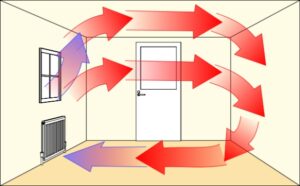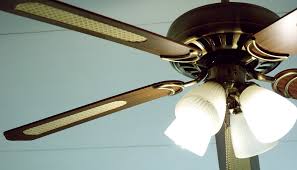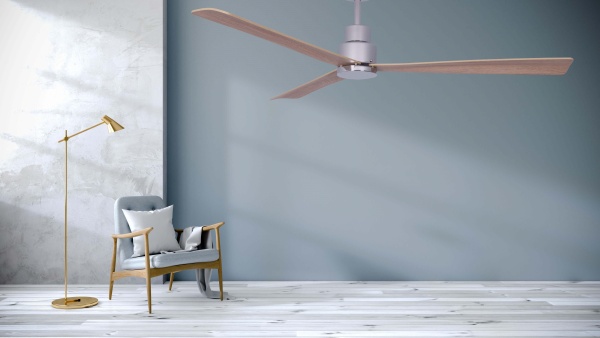- Smart Watch Payments and Digital Wallets in the Philippines - June 8, 2023
- Front-Load vs. Top-Load Washing Machines - May 25, 2023
- Pros And Cons Of Wireless Charging Power Banks - May 10, 2023
Last Updated on
How to Choose the Right Ceiling Fan Size for your Room
Choosing the right size ceiling fan for your room is an important decision. The correct size will significantly affect airflow and energy efficiency while enhancing the space’s look.
Before making a purchase, it’s important to understand what factors influence your ceiling fan size and measure your room correctly to ensure you decide and pick the perfect ceiling fan size.
What is the Right Ceiling Fan Size?
When choosing ceiling fans, sizing isn’t based on style or design preferences. Rather than looking for one that might fit into a certain area of your home decor theme, choosing one with an appropriate overall width and diameter compatible with its environment is more important.
Ceiling Fan Sizes: Guide
In general, these are the basic guidelines that help you find the perfect ceiling fan size for any room. Check out the usual ceiling fan dimensions for common rooms that might need ceiling fans.
| Room Size | Ideal Ceiling Fan Size | Best For: |
|---|---|---|
| Small Rooms ( ≤ 100 sq feet) | 30 to 48 inches | Home Offices |
| Medium-Sized Rooms ( ≤ 400 sq feet) | 48 to 56 inches | Living Rooms, Bedrooms, and Kitchens |
| Large Rooms ( > 400 sq feet) | ≥ 56 inches | Open-concept Living Areas |
Factors to Consider
Several key factors come into play when determining how big or small your fan should be:
Room Size
Depending on the square footage, larger fans can move more air throughout bigger spaces much more quickly than smaller ones would be able to do so.

Generally speaking, rooms up to 75 square feet need a fan 36 inches in diameter, while a kitchen or bedroom measuring around 225 square feet will require a fan 50-54 inches. If you are still determining what type and size would best fit your space, enlisting help from an expert would be beneficial.
Ceiling Height
Ceiling height plays a role in choosing the right size fan for your room. The ideal mount height for a ceiling fan is 7-9 feet off the ground, so you’ll want to measure from the floor to the ceiling to determine what kind of fan will work best in your space.

High ceilings may require something bigger because longer a downrod is available, which makes blades hang low, closer to people at any given time compared to a shorter downrod, which is better for low ceilings, doing less work as they travel farther away from them for air circulation purposes, keep this in mind when you mount any ceiling fans.
Air Flow Needs
Different rooms need different amounts of airflow, thus requiring specific sizes accordingly; lastly, visual aesthetics – not only performance matters but also aesthetic appeal- due to its visible presence either by standing out or blending in seamlessly like part of furniture pieces itself!

Additionally, with many modern fans featuring adjustable speed settings or reversible blades allowing cool air circulation during summer months and warm moving air during winter months, factoring in how much cooling or heating power you require is essential when deciding which fan size suits you best.
Visual Aesthetics
When it comes to selecting a ceiling fan, the look of your fan must be taken into account. Ceiling fans are available in many designs and styles – from sleek style, and contemporary to traditional looks. Durable materials such as rust-resistant finishes, architectural bronze and stainless steel are also available to match any interior décor.

Do you want a basic ceiling fan? A wooden one? or even a ceiling fan with light fixtures? Not only performance matters but also aesthetic appeal due to its visible presence, either by standing out or blending in seamlessly like part of the furniture pieces itself!
How to Measure Ceiling Fan Size
There are several factors to consider when determining the size of a ceiling fan, and it is important to know exactly how large a fan will fit in your room. The important measurements you need to consider are the room’s length and width and the height and area coverage needed. You will need to:
Measure the Dimensions of your Room, Floor-to-Ceiling Height, and the kind of airflow needed
You will need to measure the length and width along each wall with a tape measure or ruler. When taking these measurements, ensure nothing obstructs them – including furniture! Once again, use either a tape measure or ruler for this measurement because any inaccuracies could lead to an unsuitable fit for your living space once it is in mount. Furthermore, if there’s ever any doubt about whether two different fans can fit within one area, ensure both sizes are measured separately so they may be compared with clarity!

Understanding what kind of airflow needs arise within certain areas also helps determine which kind/size might work best in various parts throughout any given space; window treatments, position relative sources of heat/cold air might all play roles depending upon particular settings, so being mindful wind direction while also considering airflow around corners walls etc. help tremendously during selection processes!
Practical Tips for Finding the Right Size
Blade Size
When selecting the right fan for your room, it’s important to consider the size of the ceiling fan blades. Blades can range from 29 inches to 56 inches in diameter. Generally speaking, larger rooms need fans with a fan blade span (diameter) of 52-56 inches or more, and small bedrooms benefit from fans with a smaller blade span (diameter) of 36-44 inches.

It’s also important to ensure enough space between the ceiling and the bottom part of the fan; otherwise, you may experience a short column of airflow resulting in inefficient cooling or heating functions.
Right Style
Your room’s overall aesthetic will determine which type of ceiling fan you select, whether traditional, modern, contemporary or industrial, to tie in with the decor and furniture.
If you have higher ceilings, make sure the down rod length allows it to hang down low enough so that it doesn’t interfere with the light fixtures above when it’s switched on.
CFM Rating
It’s important to understand the CFM rating of a ceiling fan before making a purchase. CFM stands for “cubic feet per minute”, which measures how much air movement each fan blade produces. The higher the number, the more airflow you can expect from your ceiling fan. Most ceiling fans with lower numbers are better for smaller spaces, while high-CFM fans are great for large spaces. Consider your room size and other factors when selecting a ceiling fan with an appropriate CFM rating for your space.
Conclusion
Ceiling fans are an ideal way to improve the circulation and atmosphere of any room in your home. Knowing how to select the right ceiling fan size is important for ensuring that it meets your airflow needs and adds aesthetic value to the space. To ensure you’re selecting a size that fits best, consider factors such as room height, airflow requirements and blade length when deciding on a fan. With this knowledge in hand, you’ll be able to find the perfect ceiling fan for whatever space you have available!

